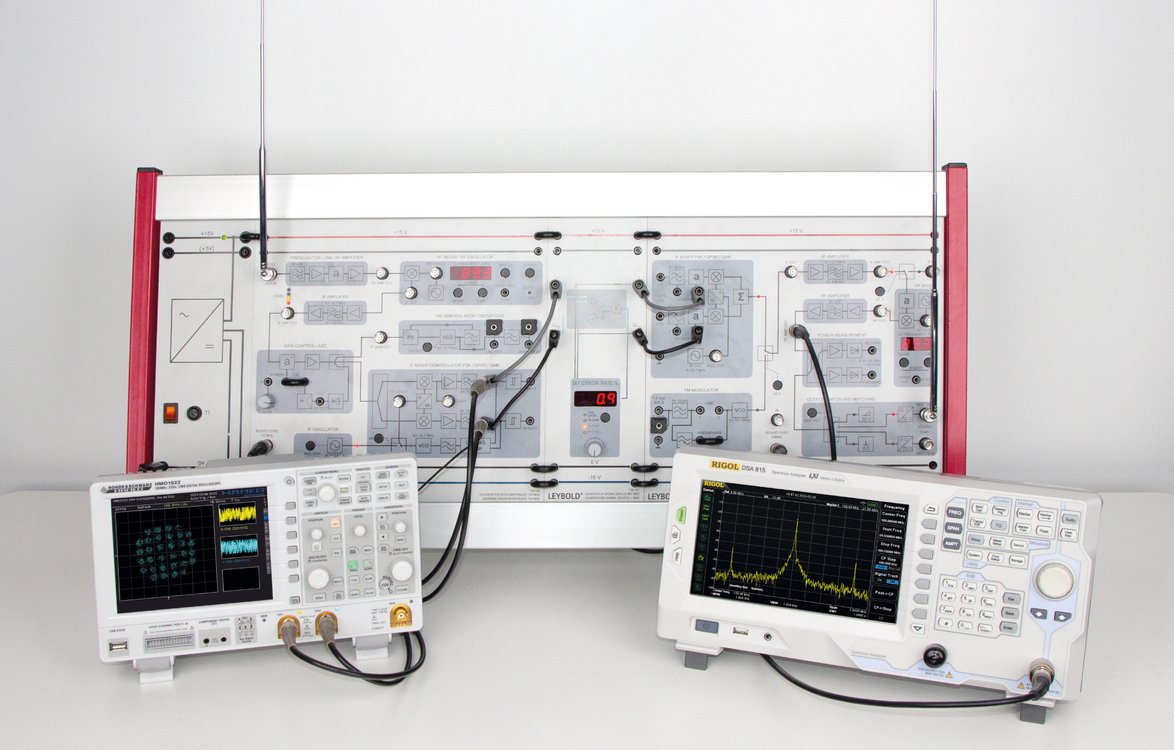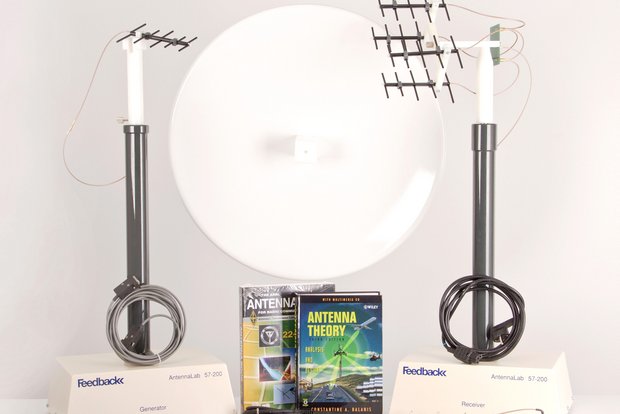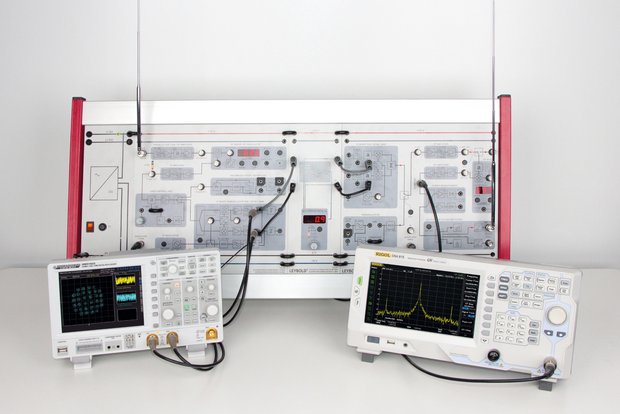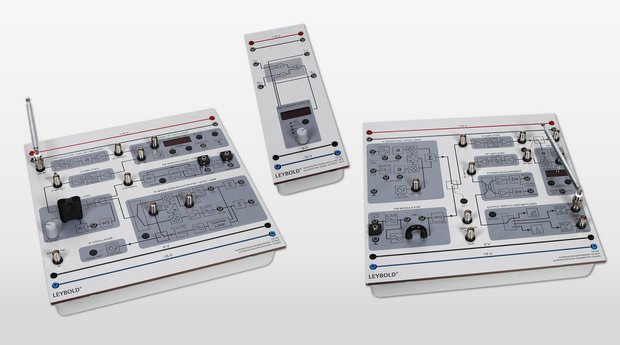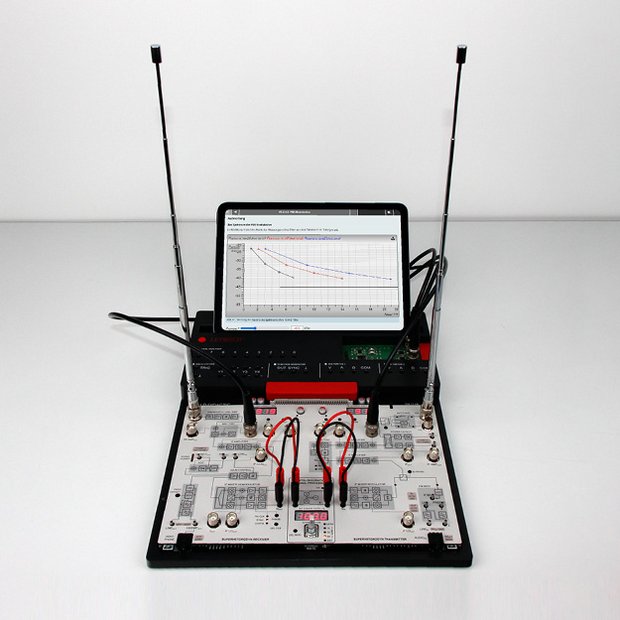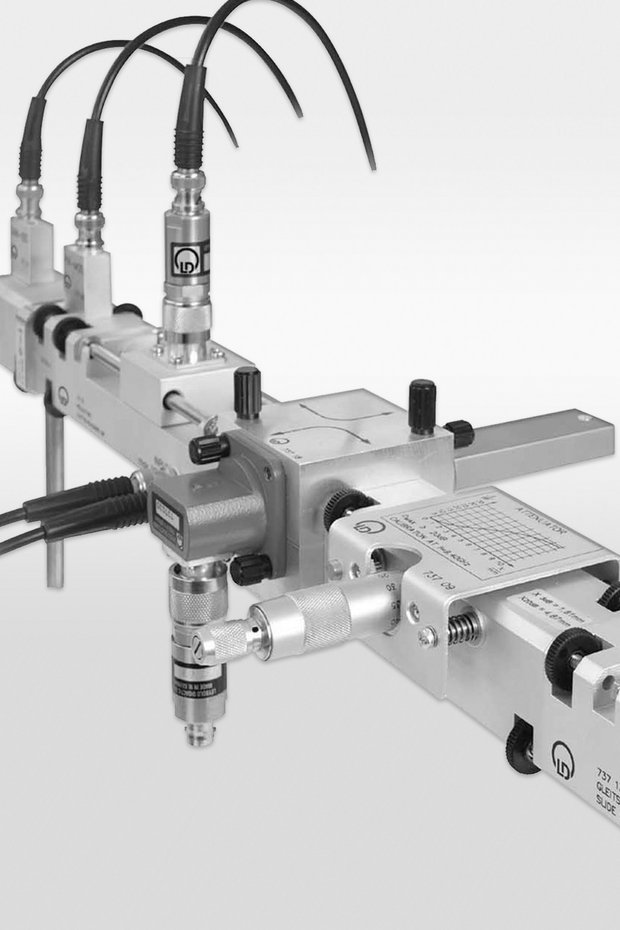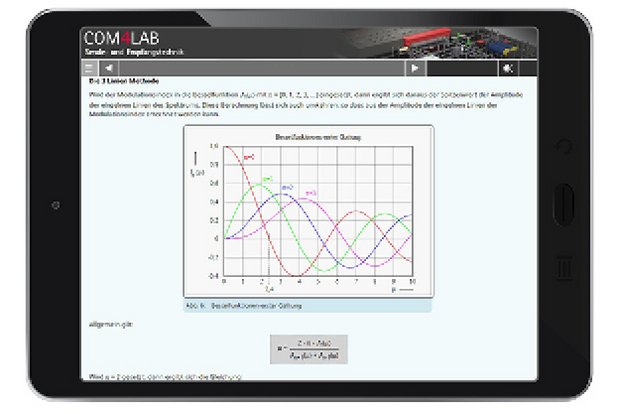Directly into practice
Our modular systems for communications technology are characterised by fast operational readiness and reproducible results. All measuring points are easily accessible via BNC or 4 mm safety sockets. Each module is an independent function block and can be combined to form a scalable transmitter and receiver system.
The product range includes:
- Signal generators
- Modulators for analogue and digital modulations (AM, FM, PSK, DPSK, QPSK, QAM ...)
- Transmission lines
- Antenna systems
- Measuring devices
Our training systems teach key skills in the areas of measurement technology, transmission and reception technology, high-frequency technology and antenna technology for all levels of training and study.
Compact modules
LEYBOLD offers a compact trainer focussing on the system understanding of modern communication systems. This contains three modules:
- Superheterodyne transmitter
- Superheterodyne receiver
- Vector signal processor with generator and analyser
In the 100 MHz band, signals are transmitted with minimal transmission power. These were previously generated in the baseband, modulated, filtered via an intermediate frequency and then mixed to high frequency. The aim of the experiments is a comprehensive metrological investigation of all components. Each measuring point is designed as a BNC socket and is therefore suitable for the connection of professional measuring devices.
To the Superheterodyne transmission and reception technology
Introduction to transmission and reception technology
The COM4LAB courses offer a comprehensive introduction to transmitting and receiving technology, in which trainees and students can immerse themselves in practice using realistic, licence-free radio links. These courses focus on system understanding and measurement analysis. Therefore, all necessary signal generators and measuring devices are already integrated in the COM4LAB system. These include a quadrature signal generator, oscilloscopes, power meters, a 200 MHz spectrum analyser and a bit error rate measuring device.
Regardless of whether the focus of the training is on electrotechnical components, system understanding or the methods of interference-free transmission technology, these COM4LAB courses cover all relevant topics.
In addition to the four courses for transmission and reception technology, we offer the following COM4LAB courses:
- Modem technology
- Telecommunication lines
- Digital communication technology
Robust experimental systems
A particular focus of our experimental systems for communications technology is on high and very high frequency technology, including microwave and radio relay technology, waveguide technology and the comparative analysis of antenna systems. The robust LEYBOLD experimental systems can be set up quickly and easily and measurements can be carried out reproducibly in a short time.
As the setup of the experiment is an integral part of the didactic contents, sustainable knowledge in dealing with high-frequency systems is easily imparted. In combination with the measurements in the system under various conditions, this lays the foundation for practical everyday working life.
Measuring and understanding
As all signals are generated and processed in real life, they can be measured and analysed using both didactic and professional laboratory equipment. The ability to carry out correct measurements and interpret the results correctly is the core feature of our systems and cannot be replaced by any simulation.
LEYBOLD's training systems enable reproducible measurement results and minimise external influences, making it easier to focus on and understand the learning content. This enables an experiment in which trainees and students authentically learn to really understand signals and set up oscilloscopes or spectrum analysers correctly.
Subjectively, students gain insights into the setup and functioning of modern transmitters and receivers and understand the key parameters that influence the quality of signal transmission.


